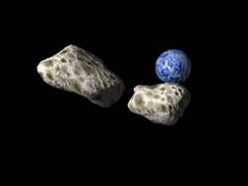Asteroid lost and found
A long-lost asteroid that came close to Earth in 1937 has been spotted again.
By Emily Sohn
Everybody loses things: Socks in the laundry. Sunglasses. Phone numbers written on little scraps of paper. You may have even lost your homework once or twice. But can you imagine losing an entire asteroid?
That’s exactly what happened to Hermes, an asteroid that vanished into the darkness after it was last spotted in 1937. Since then, astronomers have been scouring the skies for the runaway object.
 | ||
|
| ||
| Courtesy of spaceref.com/Keith Cowing. Copyright © spaceref.com. |
At long last, Hermes has shown up again. Early in the morning on Oct. 15, Brian Skiff of Lowell Observatory in Flagstaff, Ariz., spotted a near-Earth asteroid and suspected it might be Hermes.
Based on the asteroid’s path, two scientists at NASA’s Jet Propulsion Laboratory in Pasadena, Calif., then used a computer program to trace the asteroid’s journey over the past 66 years. They discovered that it has circled the sun 31 times without being seen. It has come as close as 640,000 kilometers to Earth, just 1.6 times the distance separating Earth and the moon.
The scientists then looked ahead, calculating the asteroid’s future path. Luckily, there’s no chance that Hermes will crash into Earth within the next 100 years.
New observations also show that Hermes is actually made up of two chunks that orbit each other. Each piece is about 300 to 450 meters across. Finding Hermes should help astronomers better understand how asteroids break apart and how each piece affects the movements of the other.
Now, has anyone seen my mittens?







